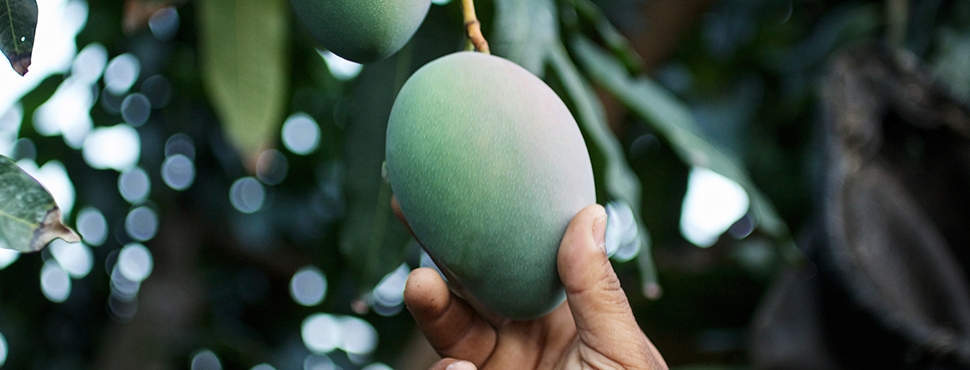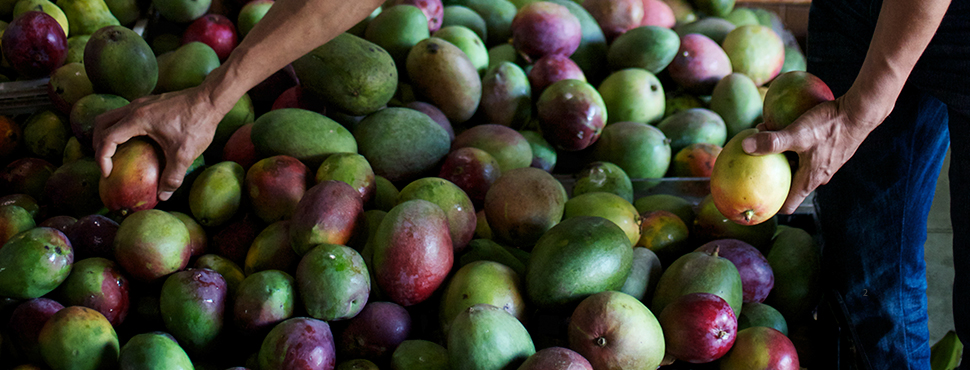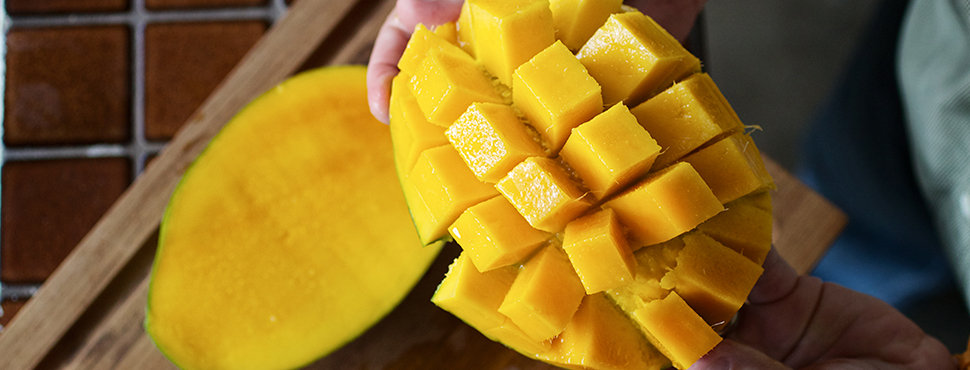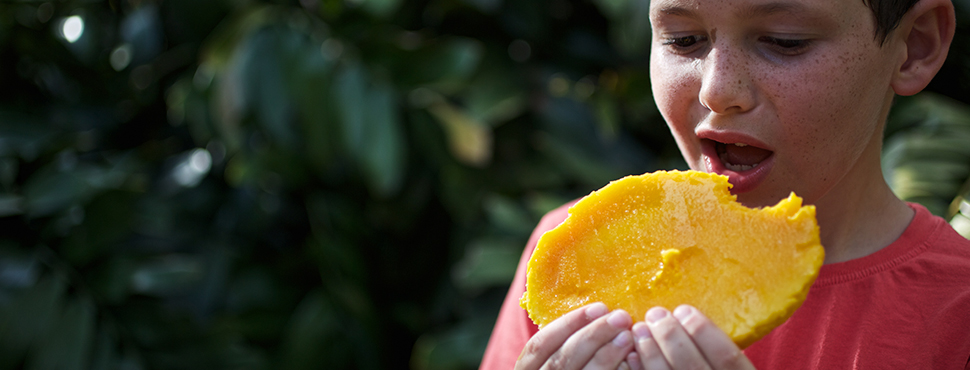Mango Production & Postharvest Best Practices
PRODUCTION AND POSTHARVEST PRACTICES
From the tree to the consumer’s plate, every step in the mango supply chain presents an opportunity to improve quality. The National Mango Board has invested in research to provide a clear understanding of how quality can be improved through better production, postharvest and handling practices. From maturity assessment to quarantine protocols to packaging solutions and more, the research being conducted can be used to make a real difference in mango quality.
POSTHARVEST BEST MANAGEMENT PRACTICES MANUAL
This publication from the National Mango Board and the University of Florida is designed to help improve mango handling practices at each stage of the mango supply chain. The ultimate goal is to improve mango quality for the U.S. consumer, which will spur repeat purchases, drive increased demand, and strengthen the mango market.
In the manual, users will find a detailed outline of the mango supply chain with best practices described at each step. A section on quality control procedures covers other important topics, such as determining mango maturity. Also included are forms for assessing mango quality and for auditing handling procedures at the farm, packinghouse, importer warehouse, distribution center or retail store.
The NMB’s 2007-09 research project, Monitoring and Evaluation of the Mango Supply Chain to Improve Mango Quality, was the basis for the Mango Post-harvest Best Management Practices Manual. This project involved sending researchers into the mango growing regions in Mexico, Peru, Ecuador, Brazil and Guatemala to observe the supply chain in action, evaluate quality parameters and identify practices to improve mango quality. Researchers from the University of Florida, University of California Davis, Universidad Del Valle in Guatemala and PEB Commodities conducted the research, analyzed the findings and developed the recommendations for the manual.
In addition to the research available, a downloadable version of the Postharvest Best Management Practices Manual is available in three different languages to help improve mango handling practices at each stage of the mango supply chain. You can also view a previously recorded webinar hosted by the NMB as Dr. Jeffrey K. Brecht from the University of Florida presents the best management practices and how harvesting and handling practices affect the quality and acceptability of mangos in the U.S. marketplace.
Download the Postharvest Best Management Practices Manual.
Click here to view the webinar.
MANGO HANDLING AND RIPENING PROTOCOL
The brand new Mango Handling and Ripening Protocol is designed to help you improve mango handling practices leading to better quality mangos, greater consumer acceptance and higher mango sales. This document provides best practices for the latter stages of the mango supply chain, and is meant for retailers, wholesalers, importers and anyone who handles mangos in the United States; even if they do not plan to implement a ripening program. For those that are interested in ripening, the Protocol includes detailed information based on years of research.
MANGO QUALITY WEBINAR I
The NMB hosted a webinar on May 7, 2015 in conjuction with Dr. Jeffrey Brecht from the University of Florida who discussed detailed information on proper mango temperature management. During this webinar, Dr. Brecht provided detailed information on best practices to prevent the impact of chilling injury in mangos at warehouses, distribution centers and stores. This included comprehensive information on safe chilling threshold temperatures for different varieties and maturities of mangos and emphasis on the importance of temperature when ripening mangos at different distribution facilities/warehouses and stores.
In addition, the webinar continued with a wealth of mango category information and consumer research with insights into consumer preferences and barriers to mango purchase – also available onwww.mango.org. Wendy McManus, NMB Retail Program Manager discussed access data that can help the mango industry understand the short and long-term trends in mango movement, including the exciting trends in fresh-cut mango sales. Lastly, there was a focus on the strongest mango per capita markets and sub-regions, and which markets represent the greatest opportunities.
Click here to view this previously recorded Webinar.
MANGO QUALITY WEBINAR II
The NMB hosted a webinar on August 25, 2015 in conjunction with Dr. Jeffrey Brecht from the University of Florida, and Dr. Patrick Brecht from PEB Commodities. During this webinar, Dr. Jeffrey Brecht provided detailed information on mango fruit disorders such as: fruit decay, surface defects, internal breakdown symptoms, chilling and heat injury, disorders during ripening and more.
Furthermore, Dr. Patrick Brecht discussed best practices at importer facilities and retail distribution centers such as: inspections and quality control, measuring and recording shipments, mango shipper’s responsibilities, proper documentation, cargo and temperature excursions, temperature measurement and fruit sampling at arrival, and external and internal quality evaluations.
Click here to view this previously recorded Webinar.
RELATED RESEARCH
Visit the Research section for a complete list of research projects.
DOWNLOADS
- Mango Postharvest Best Management Practices Manual
- Mango Postharvest Best Management Practices Manual – in Spanish
- Mango Postharvest Best Management Practices Manual– in Portuguese
- History of Food Irradiation
- U.S. environmental Production Agency, Pesticides Home Page
- United Nations Environmental Program, Assessment of Alternatives to Methyl Bromide
- University of Florida Agricultural Extension Service
- University of California at Davis Post Harvest Technology Program
CROP INFORMATION



